Yoga Putra joined Blue Ventures in August 2023 as the Global Senior Communications Officer for Asia-Pacific. Yoga recently participated in a learning visit to Surabaya, East Java in Indonesia, with community representatives from villages in Indragiri Hilir, Riau. Here, he shares his insights, uncovering how this learning journey has inspired participants to protect mangrove forests.
I had the honour of meeting 12 mangrove defenders from Indragiri Hilir, Riau, when I arrived at Juanda Airport in Surabaya, East Java. Their strong commitment to learning about protecting the blue carbon ecosystem led them on an epic journey lasting over 36 hours, which included boat rides, road trips, and air travel.
For most of the group, this trip marked their first time venturing outside their hometowns. They were filled with enthusiasm to explore various community-led mangrove forest sites in East Java, eager to gain insights into sustainable management practices to take back to their communities.

Mangrove forests in Indragiri Hilir, Riau. (Credit: YHB | Muhammad Hendra Putra)
The delegation represented six villages and the Mandah Forest Management Unit (KPH) in Indragiri Hilir, Riau, who have actively engaged in a programme aimed at strengthening locally led mangrove management at Indragiri Hilir since late 2022.
In addition to promoting sustainable mangrove management in Riau, the project also focuses on enhancing the capacity of local forest governance structures. This will allow coastal communities to effectively manage blue carbon habitats and fisheries within a unified framework.
Indragiri Hilir is blessed with major rivers that converge into the South China Sea, creating an ideal environment for the growth of over 127,000 hectares of mangroves, home to more than 60 thriving tree and shrub species. However, the ecosystem is susceptible to degradation due to illegal logging and land conversion.
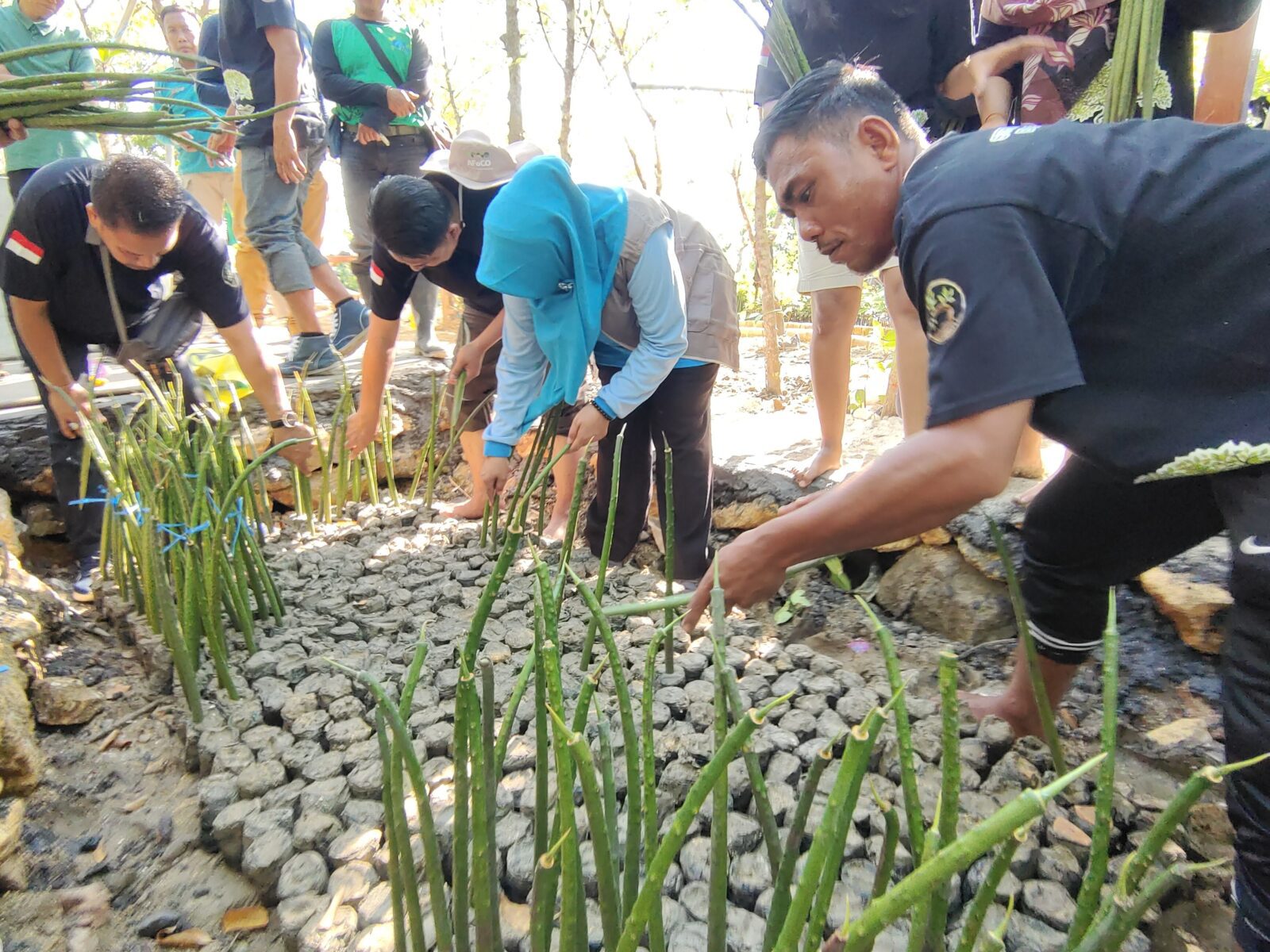
Learning participants plant mangrove seedlings in groups. (Credit: Blue Ventures | Yoga Putra)
The lush scenery of Indragiri Hilir stands in contrast to our surroundings in Surabaya. As we looked out of the car window, we mostly saw skyscrapers and concrete jungles. The mangrove trees appeared to be elusive, thriving only in certain lesser-known parts of its coastal areas.
On Madura Island, located just north of Surabaya, there is a rehabilitated mangrove site covering approximately 1,500 hectares. Here, a local conservation group known as Madura Mangrove Care Group (KPMM) employs an innovative technique of planting mangrove seedlings in groups, placing four to five seedlings in each hole. This method is designed to enhance the survival rate of the plants.
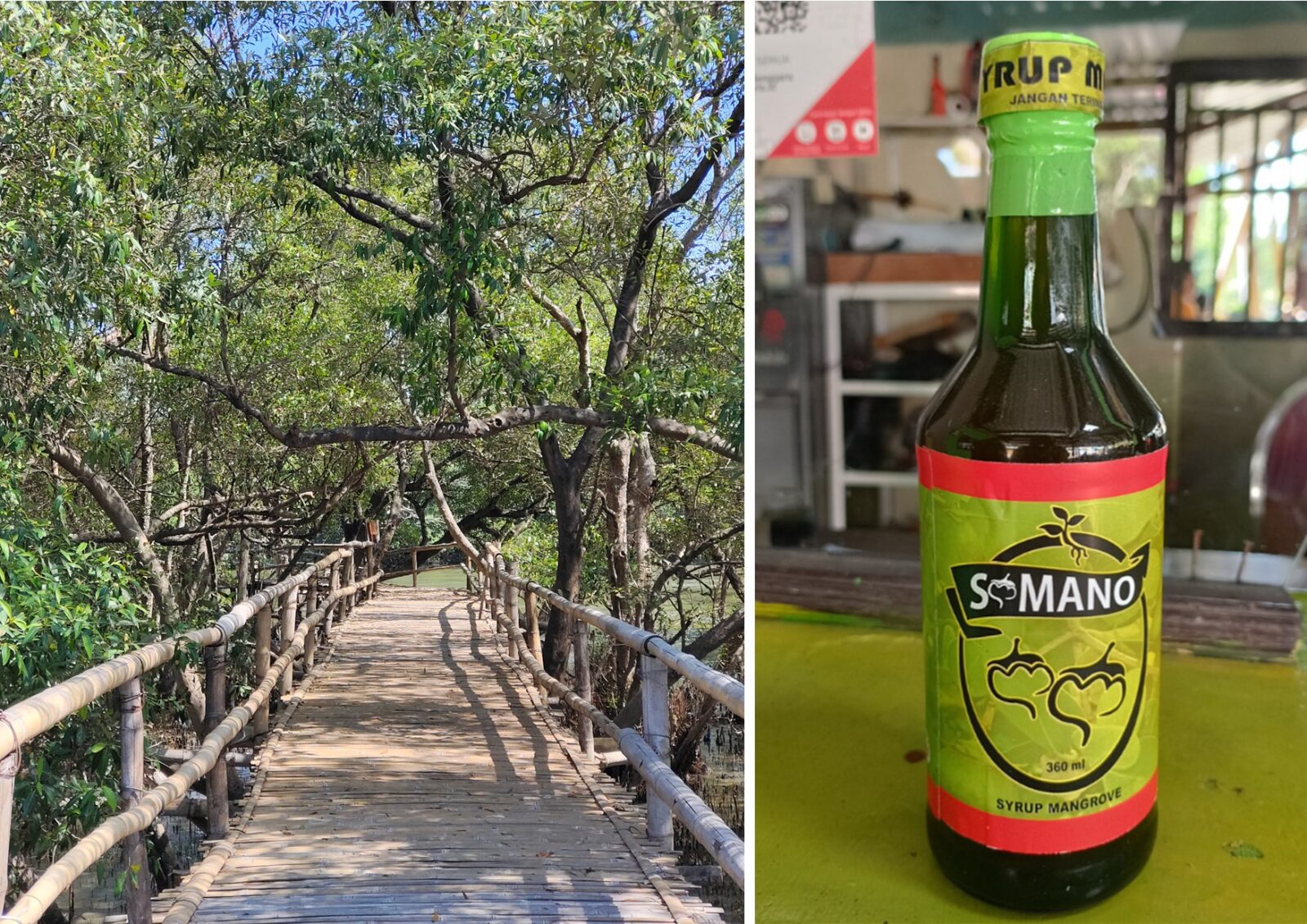
The mangrove trekking in Wonorejo (left), and the mangrove syrup (right). (Credit: Blue Ventures | Yoga Putra)
We also discovered creative initiatives aimed at optimising the potential of mangroves through the development of eco-tourism activities and the creation of byproducts in Surabaya and Malang. In both locations, visitors contribute to maintaining the coastal woodland by paying a retribution fee for guided tours. They can also buy mangrove syrups and jams as souvenirs.
With a strong commitment to preserving ecological values, the conservation groups in East Java have successfully run an integrated mangrove management system that benefits nature and local communities alike. It also has enabled them to address challenges such as rehabilitating severely damaged mangrove ecosystems and coordinating with multiple stakeholders.
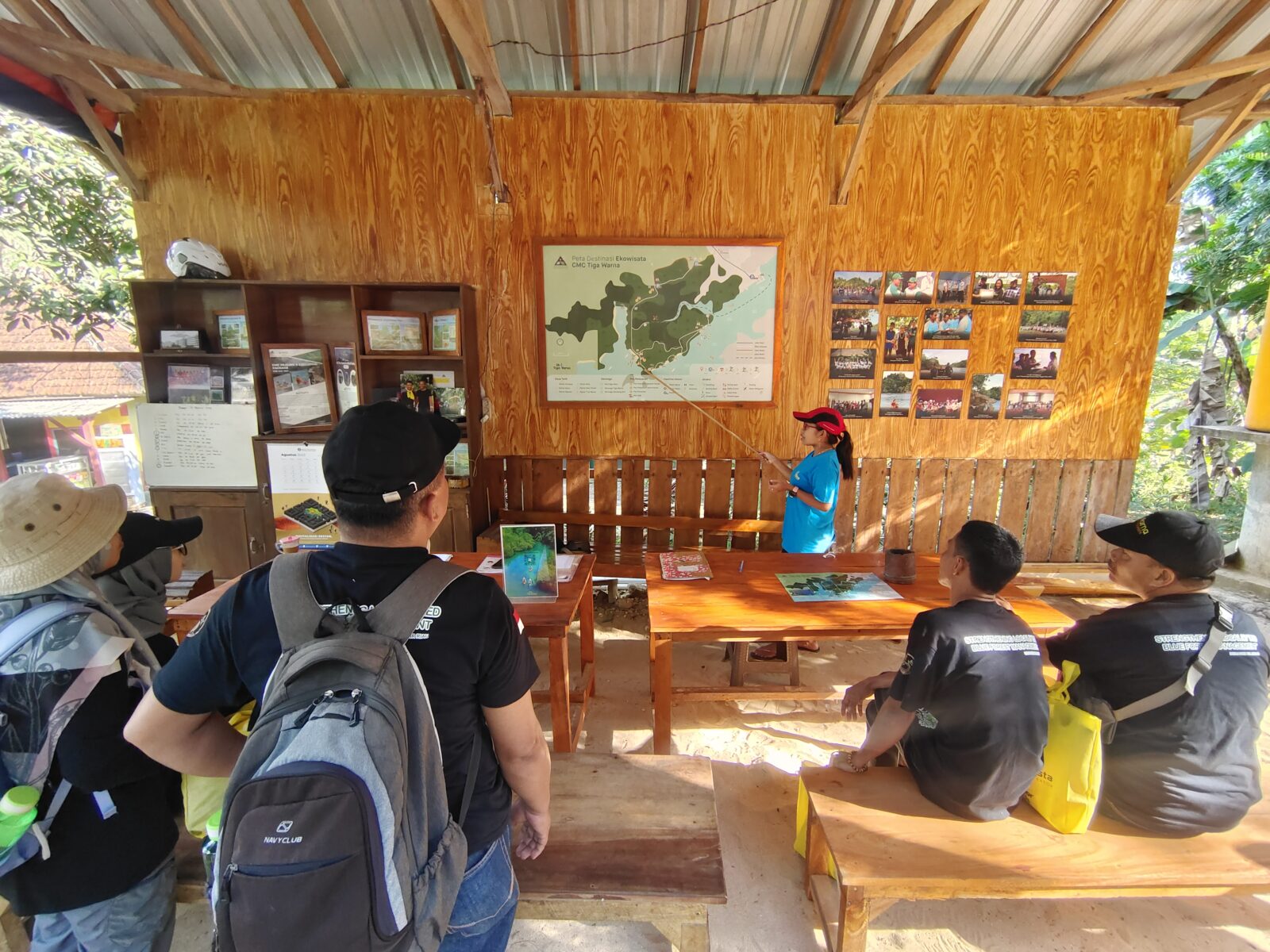
Participants pay attention to the mangrove eco-tourism briefing in Malang. (Credit: Blue Ventures | Yoga Putra)
Saptoyo, a local community leader in Malang, revealed that their mangrove forests were once one of the most degraded in Indonesia. He explained, “After years of hard work, we’ve successfully restored this ecosystem to its former glory. If only our community had known the importance of mangroves, our task would have been less daunting.”
These words left the majority of learning visit participants in awkward silence as if to suggest that they had indeed taken the abundant natural environment of Indragiri Hilir for granted.
In a facilitated discussion, we collectively reflected on our three-day journey. The majority of participants shared a common short-term goal: to protect the existing mangrove forests in Indragiri Hilir. Arbani, a participant who leads a community surveillance group (Pokmaswas) in Sapat village, expressed his dedication to carrying out regular monitoring as part of this effort.
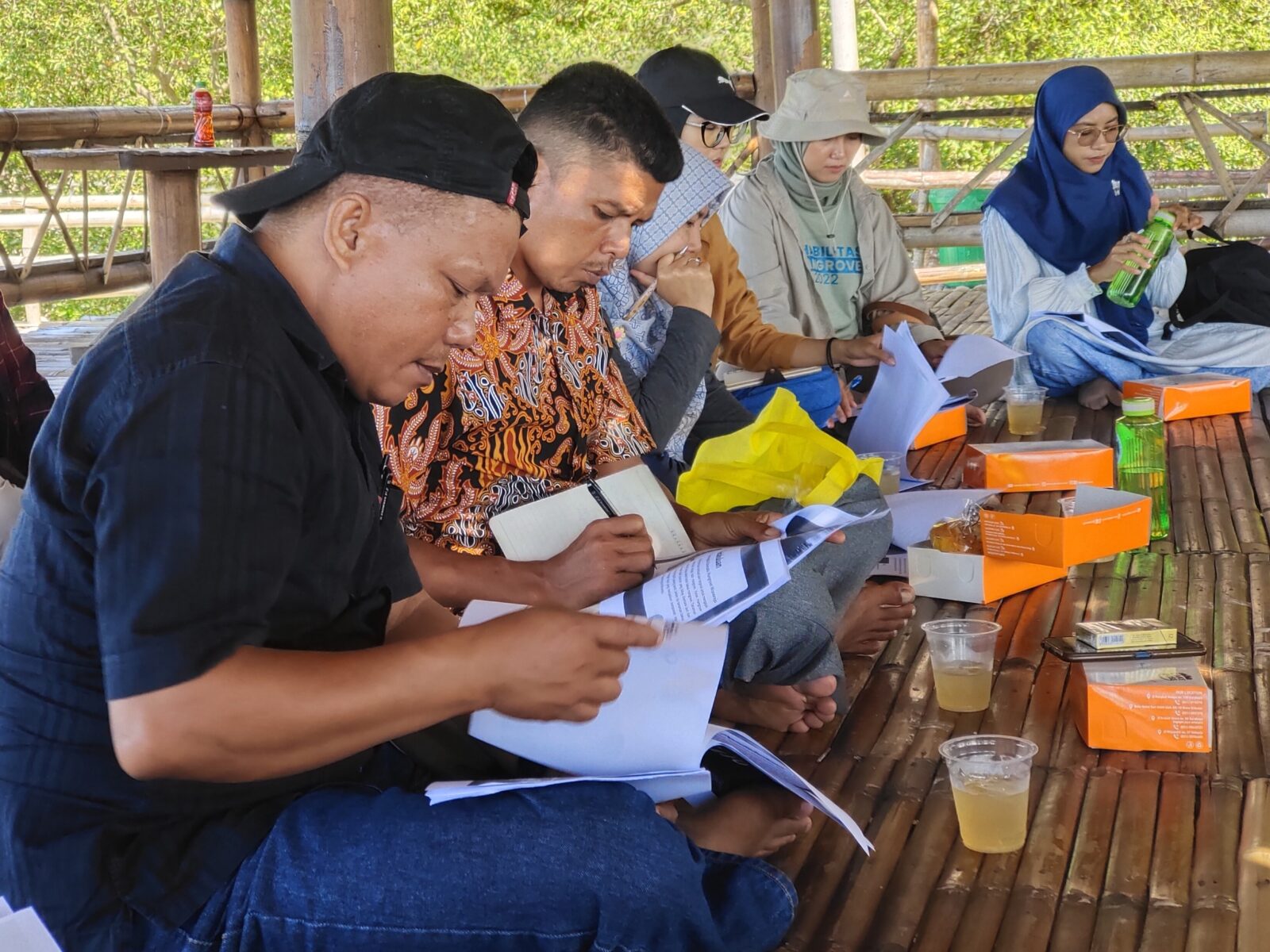
Participants take notes during discussion and evaluation. (Credit: Blue Ventures | Yoga Putra)
“Our members have been conducting monitoring for a while now to regularly inspect for any signs of illegal logging. I believe this is the perfect moment to solidify our commitment,” he said. The monitoring routine also involves checking the temporary closure areas, which will contribute to the sustainability of mud crab fisheries.
Mangrove illegal logging for charcoal production has been prevalent in most villages in Indragiri Hilir. This activity has resulted in a degradation of the vital functions of mangrove forests, which are the primary habitat for mud crabs, shrimps, and fish.
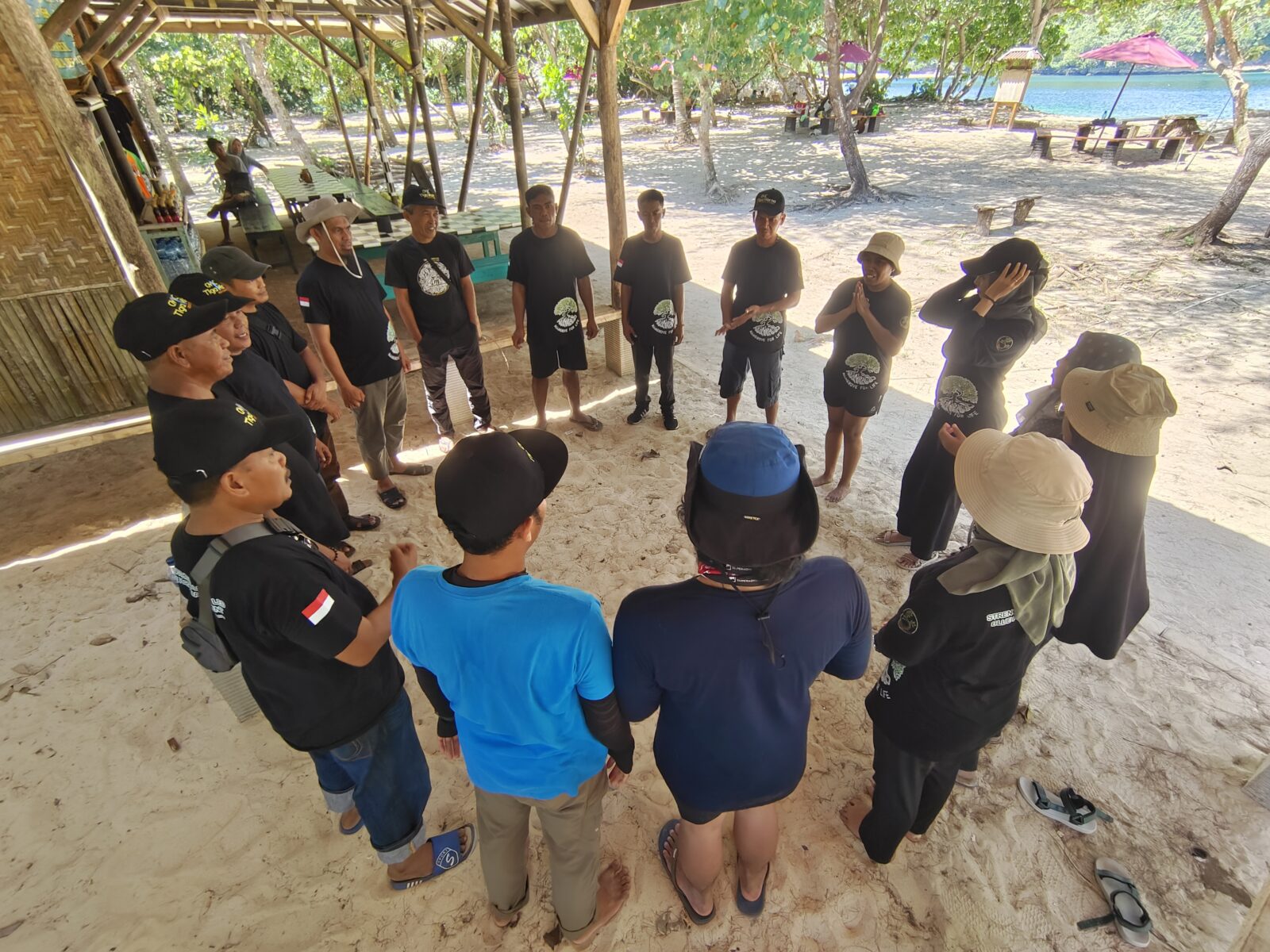
Participants discuss their reflections and action plans. (Credit: Blue Ventures | Yoga Putra)
Suriadi, the Chief of Sungai Piyai village, who also joined the learning trip, has pledged to create a village regulation for sustainable mangrove management and fisheries. The regulation will cover protected and temporary closure areas for fisheries, funding mechanisms for local surveillance groups, and penalties for violations.
As part of the long-term action plan, participants are enthusiastic about collaborating with key stakeholders to transform the mangrove forests into new eco-tourism destinations in Riau. They believe that this initiative will enhance local livelihoods while preserving the coastal ecosystems.
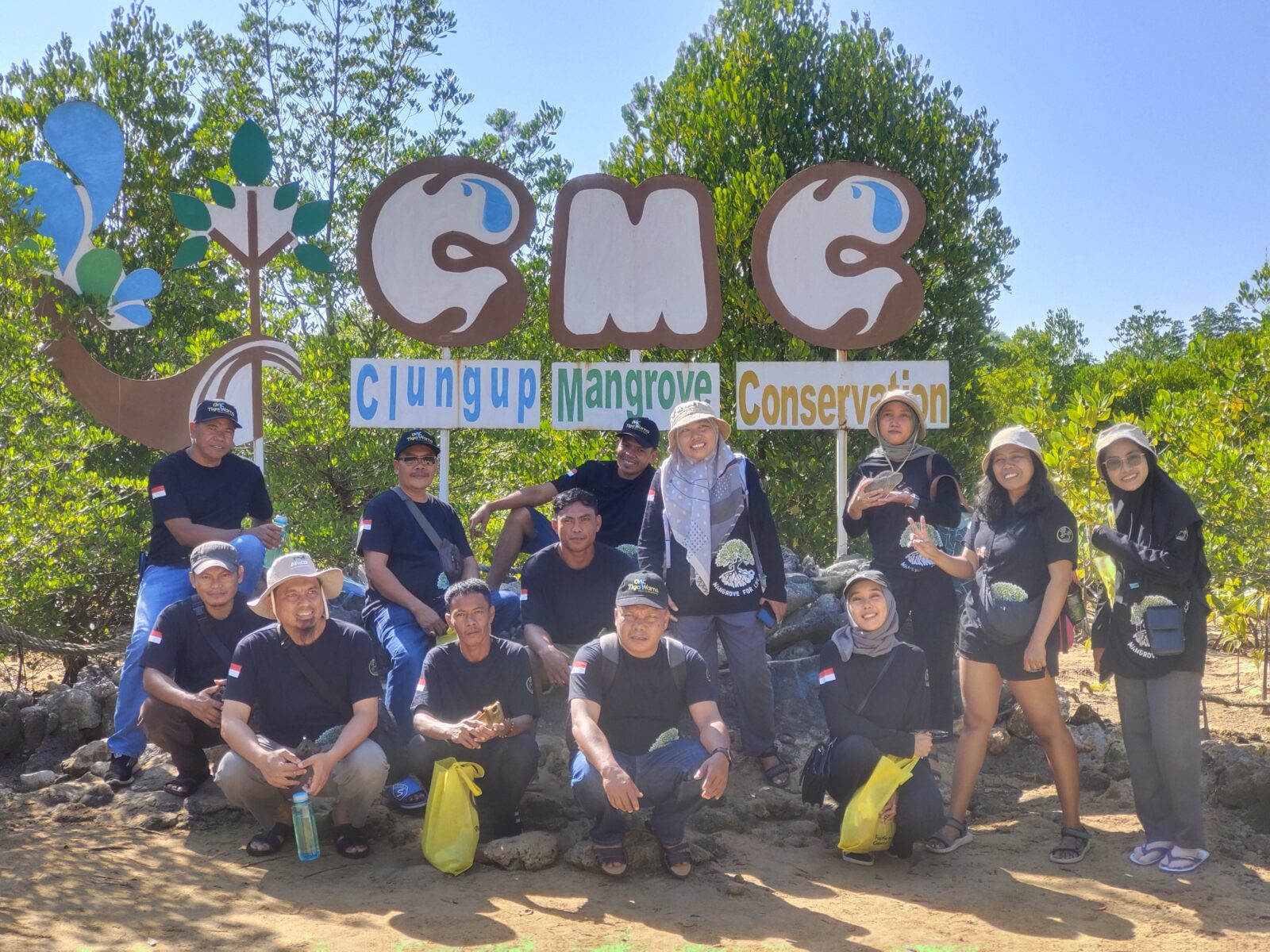
Participants visit the Clungup Mangrove Conservation (CMC) in Malang. (Credit: Blue Ventures | Yoga Putra)
The learning exchange trip to East Java has had a profoundly positive impact on the participants, reinforcing their determination to protect the mangrove forest in Indragiri Hilir, Riau. Witnessing the successful community-led restoration and preservation efforts in Madura, Surabaya, and Malang has inspired them to prioritise the conservation of natural treasures in their villages.

